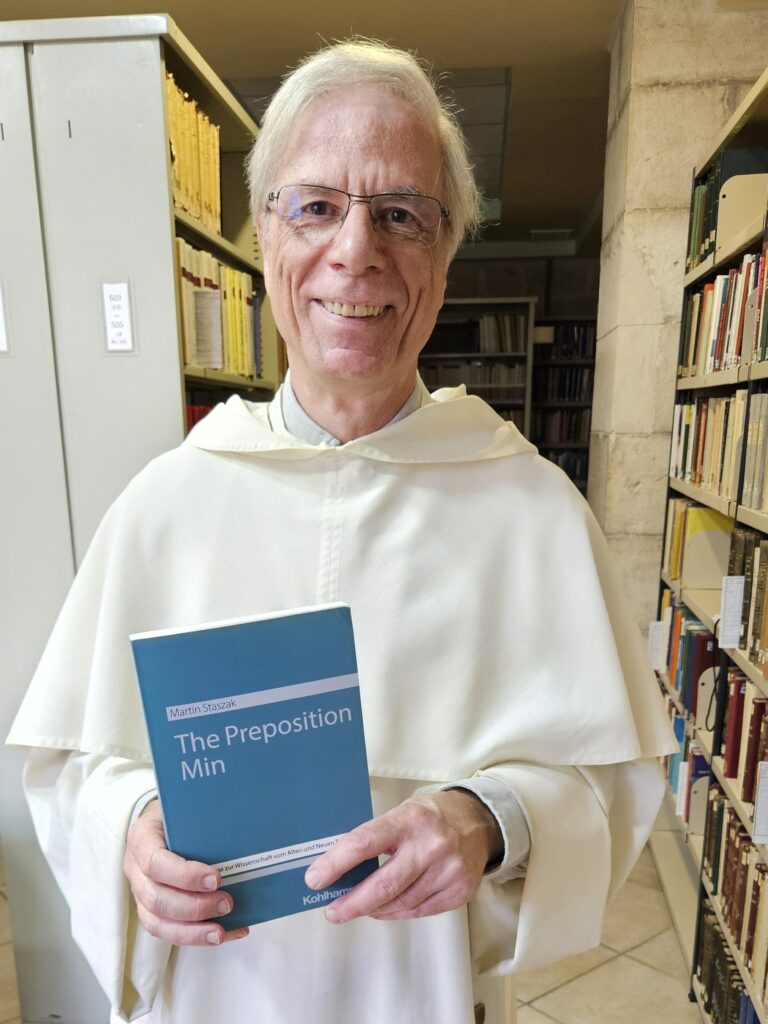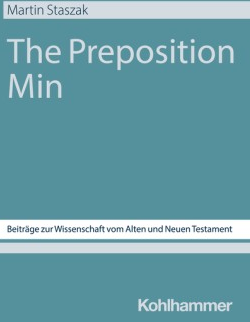Polysemic, used to express both origin and distance, Min ( מִן ) is the third most frequently used preposition in the Old Testament. Fr. Martin Staszak, o.p., looks back at the genesis and purpose of his latest publication.
How did this book come about?
“The idea came from the three volumes by the Swiss theologian Ernst Jenni (1927-2022), who taught Old Testament in Basel, including many grammatical studies. He wrote three basic volumes dealing with the Hebrew prepositions Beth, Kaph and Lamed; a more in-depth study of Min, the third most common in Biblical Hebrew and Aramaic, was necessary.
The aim is to advance linguistic research on the Old Testament and to help clarify a number of linguistic and semantic doubts as well as translation problems. New avenues have been explored: the polysemic network formed by Min is systematically presented. The functioning of Hebrew prepositions is extended to a new overall theory and the question of the logical subject in passive sentences (80% of the use of these prepositions) is addressed. It is especially in the later texts that this preposition plays the role of indicating a logical subject, in my opinion under the influence of Greek grammar. In particular, we find Min when God leads the Hebrews from Egypt to the Promised Land.”
Did you encounter any difficulties during the writing process?
“It was a long-term project, during which I explored in depth the polysemy of the Min preposition. Over a period of 2 and a half years, no fewer than 8,000 occurrences had to be examined to produce a register of some forty pages. The aim of the book is to shed light on persistent difficulties of translation and understanding, in order to gain a better understanding of the meaning of this preposition in the Scriptures. This is the difference with our modern languages, which do not have these concepts: the same preposition can take on a different meaning, if not the opposite. For example al ( על ), found in the airline El Al, means high, above someone. It’s a relationship of superiority, hierarchy and also addition.
I’ve been able to work continuously, especially two and a half years ago during the two months I spent in Canada at the end of my term as prior. I made a lot of progress there. I had fewer responsibilities and therefore more time. They were very pleasant months devoted to research. Back at the ÉBAF, I used the resources of the library, particularly the many commentaries it contains on all the books of the Old Testament. I was also able to include international colleagues in this work. I’m thinking in particular of Camil Staps from Leiden University, who was doing his doctoral thesis on a subject similar to mine. He gave me access to his manuscript in advance, which was a very positive enrichment. I am also thinking of Vladimir Olivero, from Harvard University, who also made a chapter of his unpublished thesis available to me. He was at the ÉBAF last year, teaching Akkadian and doing research.”
 Photo: ÉBAF, Ordo Prædicatorum.
Photo: ÉBAF, Ordo Prædicatorum.
Fr. Martin Staszak, OP, with his copy in the library.
Who is your book aimed at?
‘This book is intended to support students and teachers of exegesis who are looking for the exact meaning of this preposition in texts written in Biblical Hebrew. It helps them understand the structure.”
What are your future writing projects?
“I’m delighted to have been asked to write a commentary on I. Samuel 16-31. David, persecuted by Saul, who dies during the war against the Philistines, comes to power and succeeds him on the throne of Israel. After working on technical questions, it’s a good idea to return to narrative texts!”
Get your copy of The Preposition Min from Kohlhammer.

